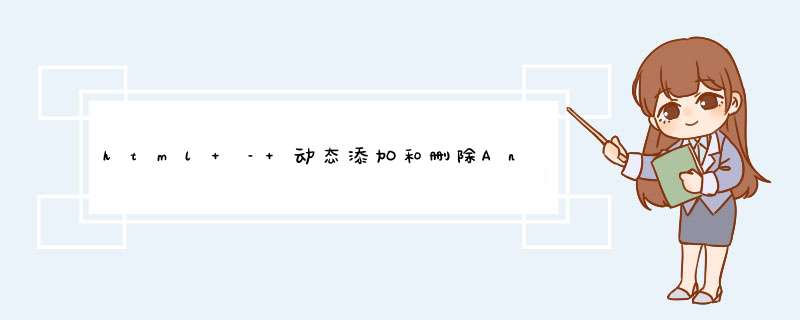
我想要实现的是,假设我有3个组件:标题,节和页脚,带有以下选择器:
<app-header><app-section><app-footer>
然后有6个按钮可以添加或删除每个组件:添加标题,添加节和添加页脚
当我点击添加标题时,该页面将添加< app-header>到呈现它的页面,所以页面将包含:
<app-header>
然后如果我单击Add Section两次,该页面现在将包含:
<app-header><app-section><app-section>
如果单击“添加页脚”,页面将包含所有这些组件:
<app-header><app-section><app-section><app-footer>
是否有可能在Angular中实现这一目标?请注意,ngFor不是我正在寻找的解决方案,因为它只允许向页面添加相同的组件,而不是不同的组件.
编辑:ngIf和ngFor不是我正在寻找的解决方案,因为模板已经预先确定.我正在寻找的东西就像是一堆组件或一组组件,我们可以轻松地添加,删除和更改数组的任何索引.
编辑2:为了使它更清楚,让我们有另一个例子说明为什么ngFor不起作用.假设我们有以下组件:
<app-header><app-introduction><app-camera><app-editor><app-footer>
现在,这里有一个新组件< app-description>,用户希望在其中插入< app-editor>. ngFor只有在我想要循环遍历的同一个组件时才有效.但是对于不同的组件,ngFor在这里失败了.
解决方法 您可以通过使用ComponentFactoryResolver动态创建组件然后将它们注入VIEwContainerRef来完成您要实现的目标.动态执行此 *** 作的一种方法是将组件的类作为函数的参数传递,该函数将创建并注入组件.见下面的例子:
import { Component,ComponentFactoryResolver,Type,VIEwChild,VIEwContainerRef} from '@angular/core';// Example component (can be any component e.g. app-header app-section)import { DraggableComponent } from './components/draggable/draggable.component';@Component({ selector: 'app-root',template: ` <!-- Pass the component class as an argument to add and remove based on the component class --> <button (click)="addComponent(draggableComponentClass)">Add</button> <button (click)="removeComponent(draggableComponentClass)">Remove</button> <div> <!-- Use ng-template to ensure that the generated components end up in the right place --> <ng-template #container> </ng-template> </div> `})export class AppComponent { @VIEwChild('container',{read: VIEwContainerRef}) container: VIEwContainerRef; // Keep track of List of generated components for removal purposes components = []; // Expose class so that it can be used in the template draggableComponentClass = DraggableComponent; constructor(private componentFactoryResolver: ComponentFactoryResolver) { } addComponent(componentClass: Type<any>) { // Create component dynamically insIDe the ng-template const componentFactory = this.componentFactoryResolver.resolveComponentFactory(componentClass); const component = this.container.createComponent(componentFactory); // Push the component so that we can keep track of which components are created this.components.push(component); } removeComponent(componentClass: Type<any>) { // Find the component const component = this.components.find((component) => component.instance instanceof componentClass); const componentIndex = this.components.indexOf(component); if (componentIndex !== -1) { // Remove component from both vIEw and array this.container.remove(this.container.indexOf(component)); this.components.splice(componentIndex,1); } }} 笔记:
>如果您希望以后更容易删除组件,可以在局部变量中跟踪它们,请参阅this.components.或者,您可以遍历VIEwContainerRef中的所有元素.
>您必须将组件注册为条目组件.在模块定义中,将组件注册为entryComponent(entryComponents:[DraggableComponent]).
运行示例:
https://plnkr.co/edit/mrXtE1ICw5yeIUke7wl5
了解更多信息:
https://angular.io/guide/dynamic-component-loader
以上是内存溢出为你收集整理的html – 动态添加和删除Angular中的组件全部内容,希望文章能够帮你解决html – 动态添加和删除Angular中的组件所遇到的程序开发问题。
如果觉得内存溢出网站内容还不错,欢迎将内存溢出网站推荐给程序员好友。
欢迎分享,转载请注明来源:内存溢出

 微信扫一扫
微信扫一扫
 支付宝扫一扫
支付宝扫一扫
评论列表(0条)